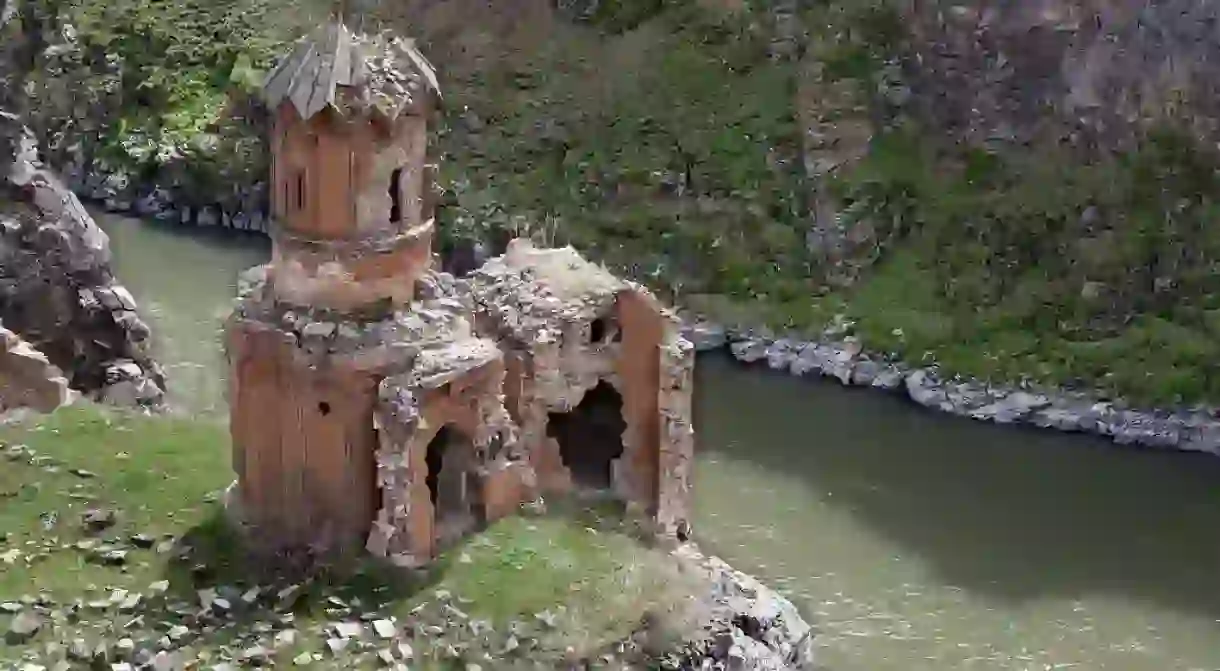The Mysterious Ruins of Ani Are a Traveler’s Dream

Located on a secluded plateau overlooking a stunning ravine that shapes the natural border between Turkey and Armenia, the ghost town of Ani has some of the world’s most striking ancient ruins. A real discovery for travelers with a knack for adventure, check out the story of amazing Ani.
Situated in Turkey’s Kars province along the border with Armenia, the ancient city of Ani is literally in the middle of nowhere, surrounded by untouched valleys and mountains. Apart from the beautiful natural scenery, the remnant structures themselves are also exceptional, including the ruins of a stunning cathedral and six churches. When Ani became the capital of the Armenian kingdom of the Bagradites, it flourished, profiting from having control over one section of the Silk Road.

The city, which lived out its golden age during the 10th and 11th centuries, was also able to later maintain its importance during the Byzantine, Seljuk, and Georgian sovereignty as a predominant crossroads for merchant caravans. It wasn’t until 1319 that the city began to lose its splendor due to a Mongol invasion and an intense earthquake. After changing hands several times (including local Turkish dynasties, the Timurid dynasty, and the Persian Safavids), Ani became part of the Ottoman Empire in 1579. A small town continued to exist within Ani’s walls until around the 17th century, but it was abandoned entirely by 1735 when the last monks left Kızkale.

It wasn’t until the first half of the 19th century that European travelers happened upon the ruins of Ani and began to write about their impressions in academic journals and travel accounts. In 1878, Ani had become part of the Russian Empire’s Transcaucasian region, and when the first archaeological excavations took place, they were sponsored directly by the St. Petersburg Academy of Sciences. During WWI, when Ottoman armies captured Kars in 1918, as many of the artifacts uncovered during the excavation as possible were saved, and they continue to be on display at the Yerevan State Museum of Armenian History. Sadly, the remaining artifacts were either looted or destroyed, leaving Ani in the dilapidated state in which it continues to live today.

However, despite the corrosive effects of time and human interaction, the ruins of Ani continue to fascinate travelers. Nowadays, no permission is necessary to visit Ani, and anyone can take a round-trip from Kars with a cab or minibus to see the ancient city. While there, make sure to see the Cathedral of Ani (Surp Asdvadzadzin), completed in 1001 with a design by Armenia’s most celebrated architect, Trdat.

Other important sights include the Surp Stephanos Church, the Church of St. Gregory of Tigran Honents, the Church of the Holy Redeemer, the Church of St. Gregory of the Abughamrents, King Gagik’s Church of St. Gregory, the Church of the Holy Apostles, the citadel (Kızkalesi), and the city walls. Right outside of Ani, there is also a cave village where inhabitants may have found shelter when the city became too overpopulated. The highlight is a cave church that still has beautiful original frescoes on its walls and ceiling.














